Two moles of helium gas undergo a cyclic process as shown in figure. Assuming the gas to be ideal. The net work done by the gas is
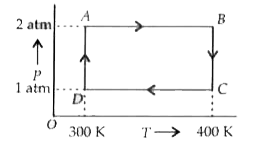
200 Rln2
100 Rln2
300 Rln2
400 Rln2
The correct Answer is:A
At constant pressure,
W=P(Vf−Vi)=nR(Tf−Ti)
At constant temperature,
W=nRTlVfVi=nRTln(PiPf)
So work done for pths AB, BC, CD and DA respectively will be WAB=2×R(400−300)=200R
WBC=2×R×400ln(21)=800Rln2
WCD=2×R(300−400)=−200R
WDA=2×R×300ln(12)=−600Rln2
The net work done by the gas is W=WAB+WBC+WCD+WDA
=200R+800Rln2−200R−600Rln2=200Rln2
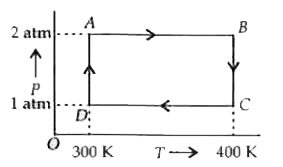
Topper's Solved these Questions
- THERMODYNAMICSBOOK - MTG GUIDECHAPTER - THERMODYNAMICSEXERCISE - NEET (ITALS)
25 Videos
- THERMODYNAMICSBOOK - MTG GUIDECHAPTER - THERMODYNAMICSEXERCISE - AIPMT/NEET (MCQs)
26 Videos
- THERMODYNAMICSBOOK - MTG GUIDECHAPTER - THERMODYNAMICSEXERCISE - AIPMT/NEET (MCQs)
26 Videos
- PROPERTIES OF BULK MATTERBOOK - MTG GUIDECHAPTER - PROPERTIES OF BULK MATTEREXERCISE - AIPMT/NEET (MCQs)
40 Videos
- WORK, ENERGY AND POWERBOOK - MTG GUIDECHAPTER - WORK, ENERGY AND POWEREXERCISE - AIPMT/NEET (MCQs)
34 Videos
Similar Questions
Two moles of helium gas undergo a cyclic process as shown in Fig. Assuming the gas to be ideal, calculate the following quantities in this process
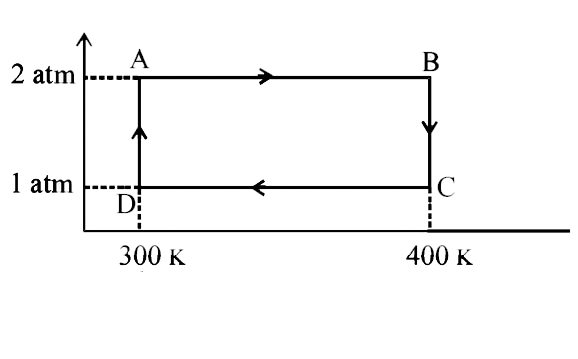
(a) The net change in the heat energy
(b) The net work done
(c) The net change in internal energy
View Solution1/R(Ris universal gas constant) moles of an ideal gas (γ=1.5) undergoes a cyclic process (ABCDA) as shown in figure. Assuming the gas to be ideal. If the net heat exchange is 10x Joules, find the value of x ? [In2=0.7]
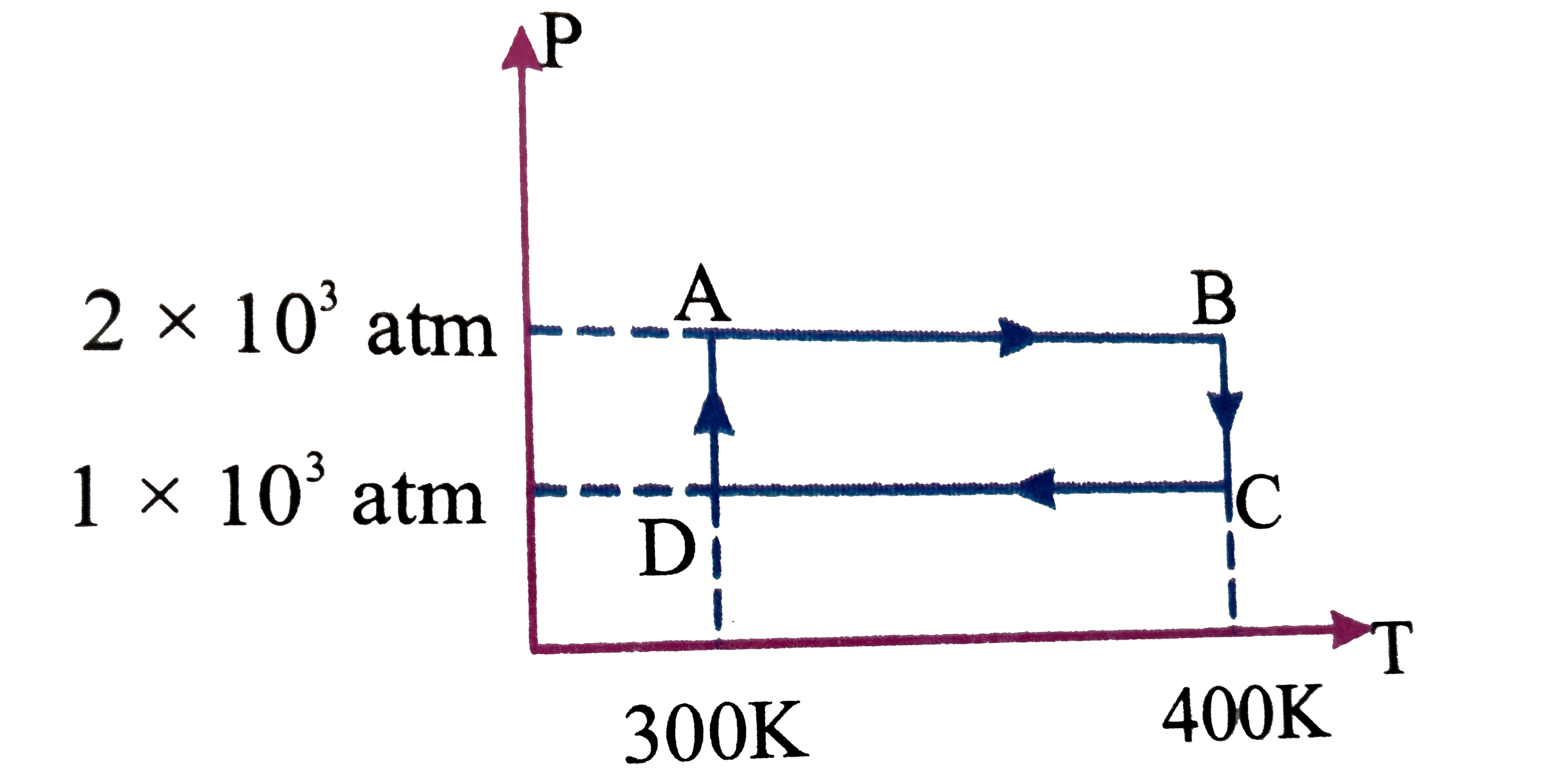
View Solution
Knowledge Check
Two moles of helium gas undergo a cyclic process as shown in figure. Assuming gas to be ideal, the net heat exchange in the process will be
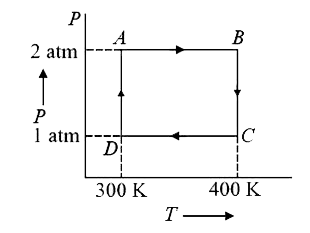 A1000 JB1152 JC1200 JD1500 J
A1000 JB1152 JC1200 JD1500 JTwo moles of Helium gas undergo a reversible cyclic process as shown in figure. Assuming gas to be ideal, what is the net work involved in the cyclic process ?
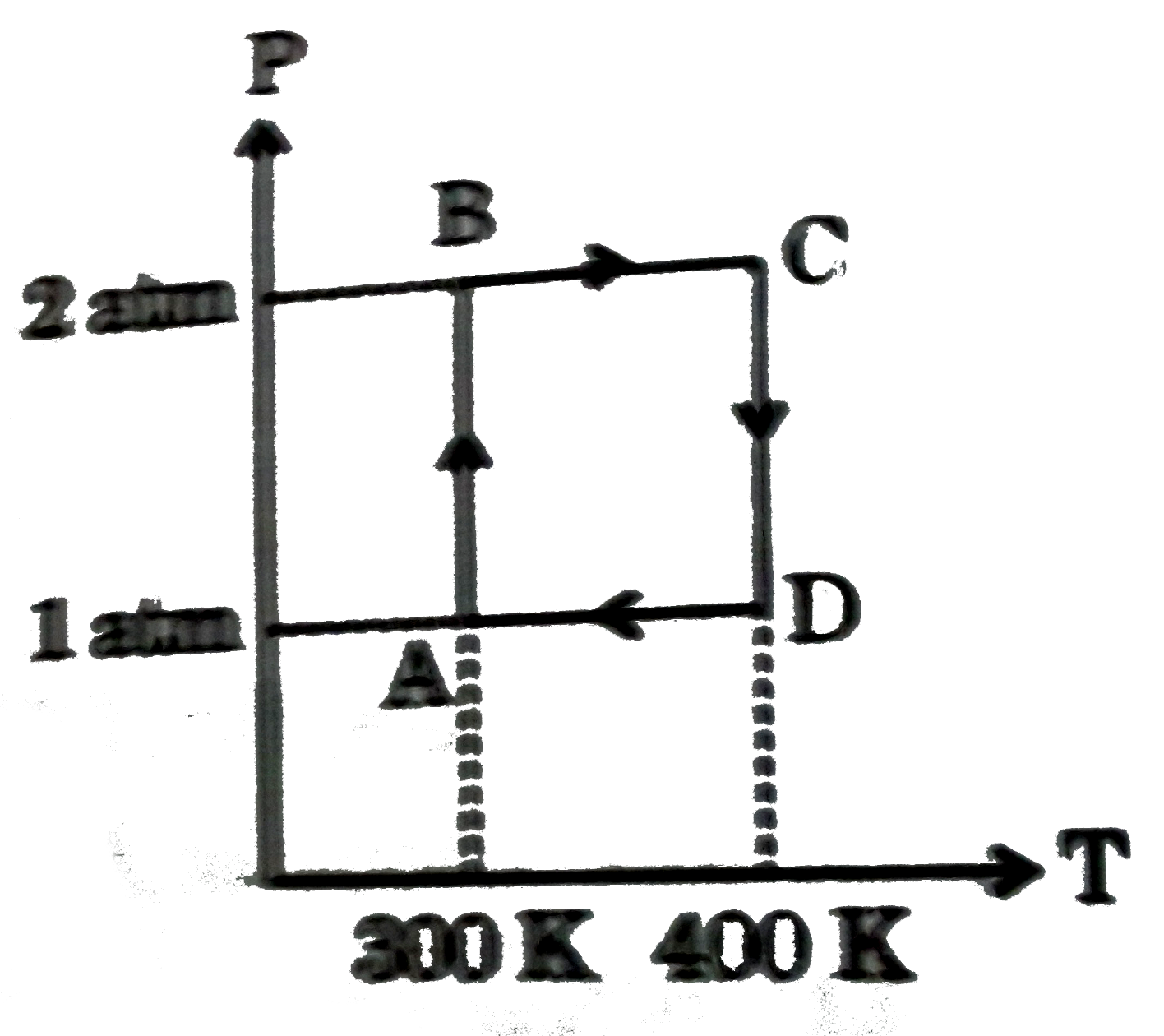 A−100Rln4B+100Rln4C+200Rln4D−200Rln4
A−100Rln4B+100Rln4C+200Rln4D−200Rln4A gas undergoes a cyclic process ABCDA as shown in the figure. The part ABC of process is semicircular. The work done by the gas is
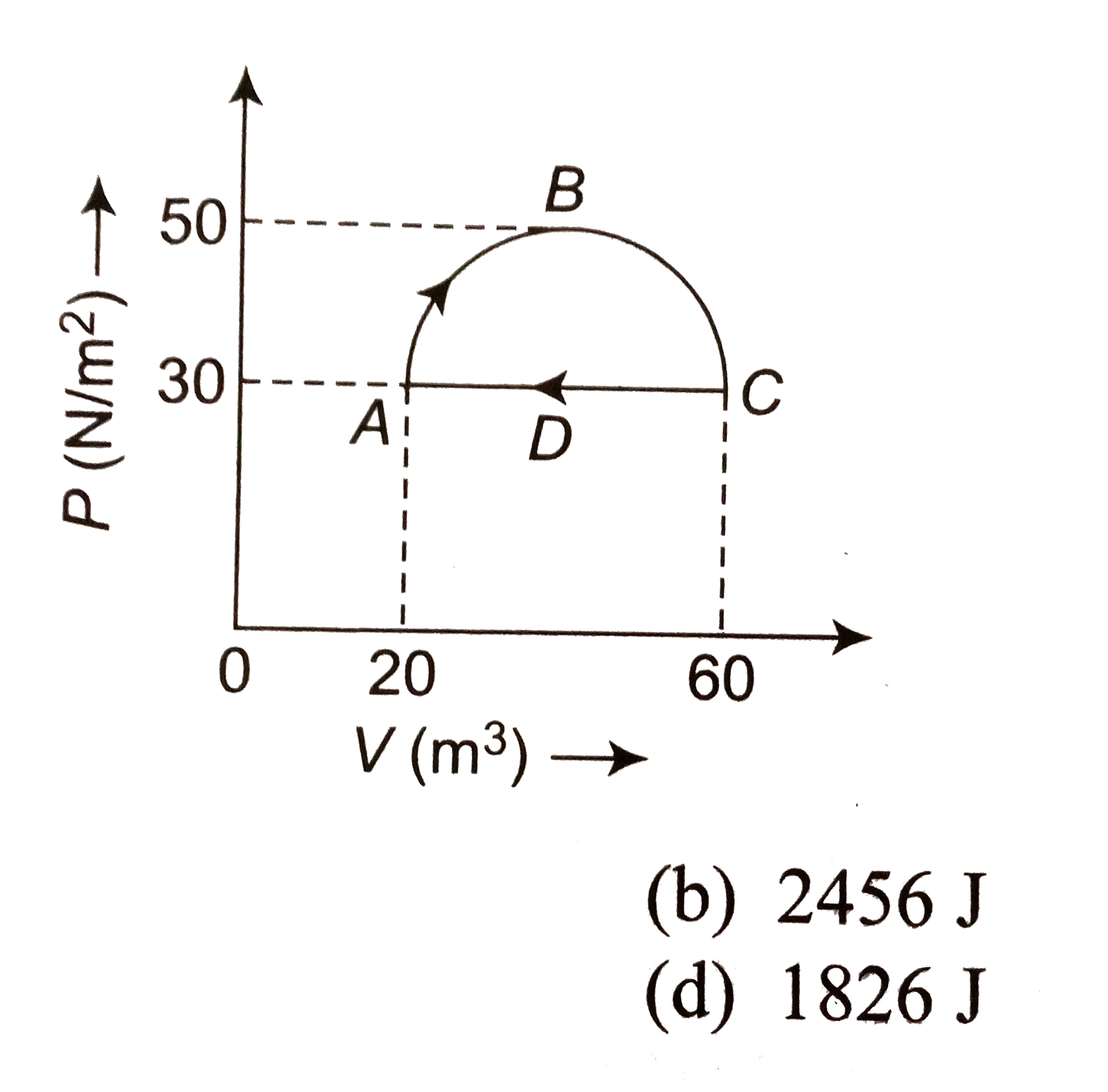 A400πJB2456JC200πD1826J
A400πJB2456JC200πD1826J
One mole of Helium gas undergoes a reversible cyclic process ABCDA as shown in the figure.Assuming gas to be ideal, answer the following questions :

What is the net work involved in the process A to C :
View SolutionOne mole of Helium gas undergoes a reversible cyclic process ABCDA as shown in the figure.Assuming gas to be ideal, answer the following questions :

What is the value of 'q' for the overall cyclic process:
View SolutionOne mole of Helium gas undergoes a reversible cyclic process ABCDA as shown in the figure.Assuming gas to be ideal, answer the following questions :

What is the value of ΔH for the overall cyclic process:
View SolutionTwo moles of helium gas are taken over the cycle ABCDA , as shown in the P-Tdigram

Assuming the gas to be ideal the work done on the gas in taking if from A to B is -
View SolutionTwo moles of helium gas are taken over the cycle ABCDA, as shown in the P-T diagram
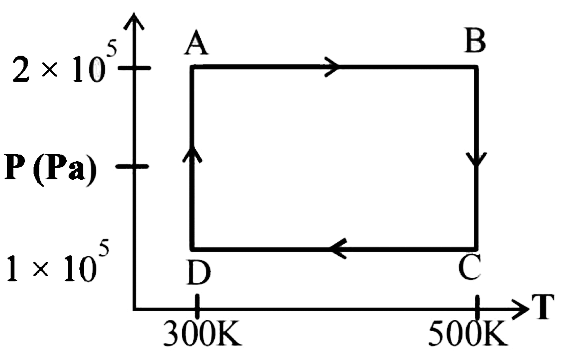
Assuming the gas to be ideal the work done on the gas in taking it form A to B is :
View Solution
